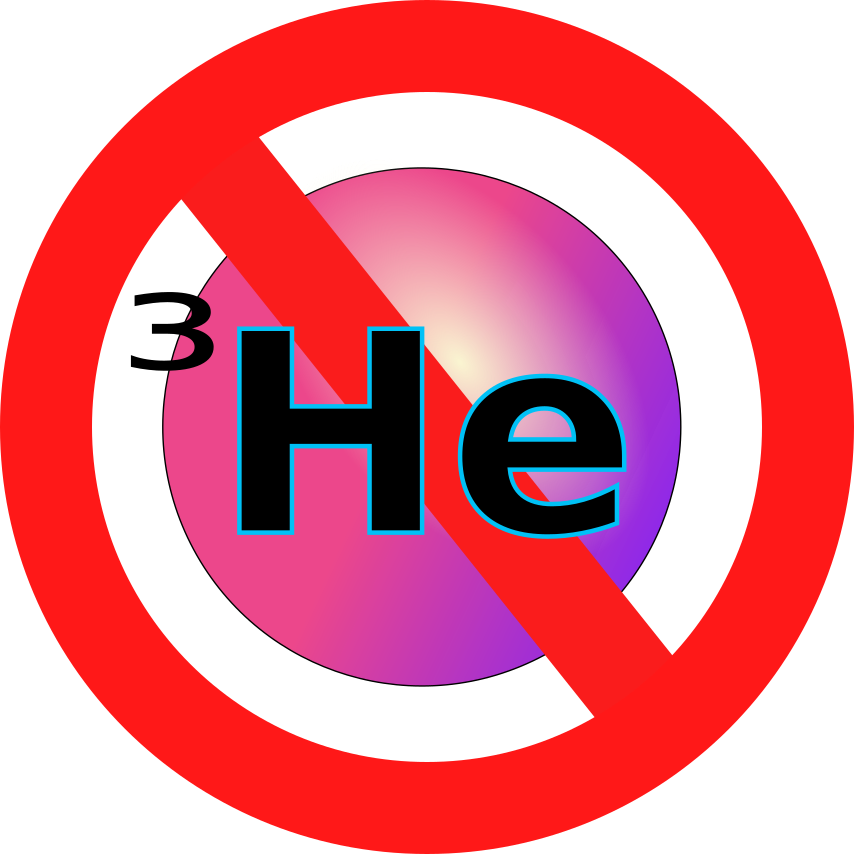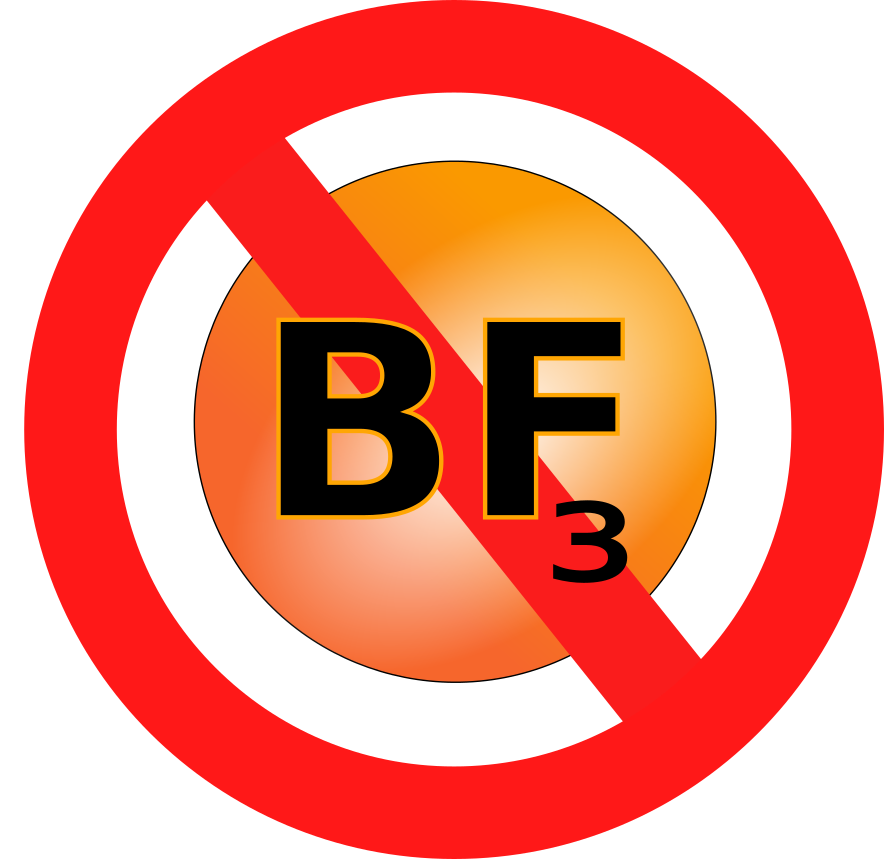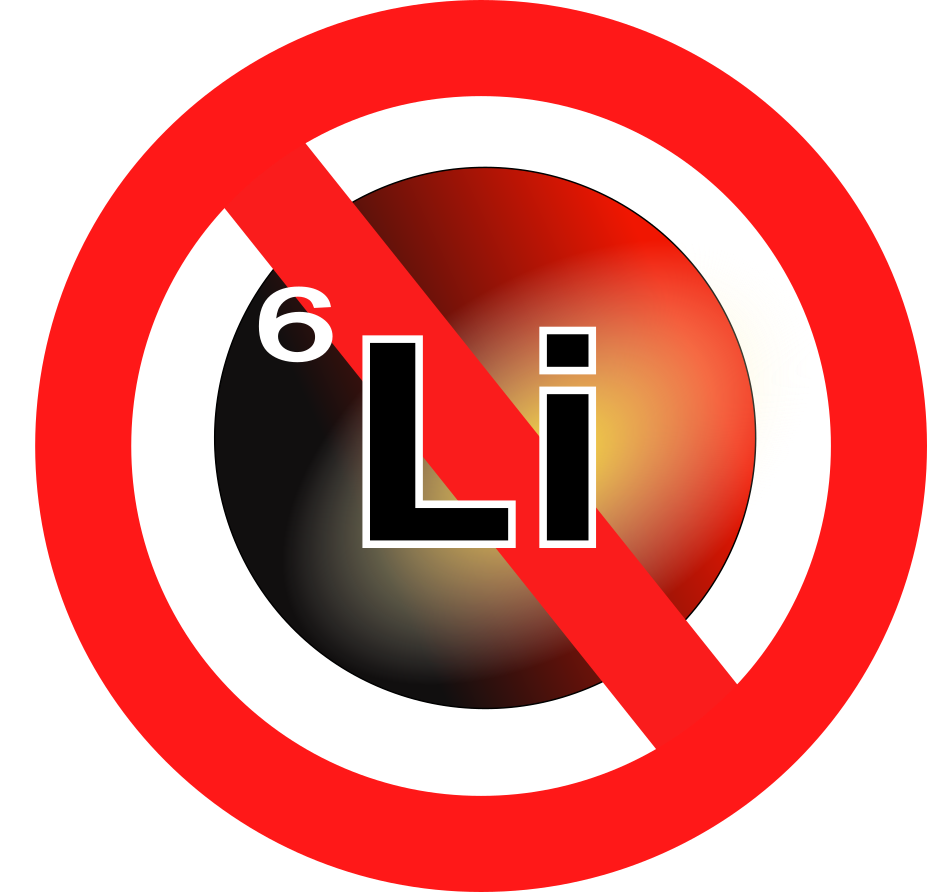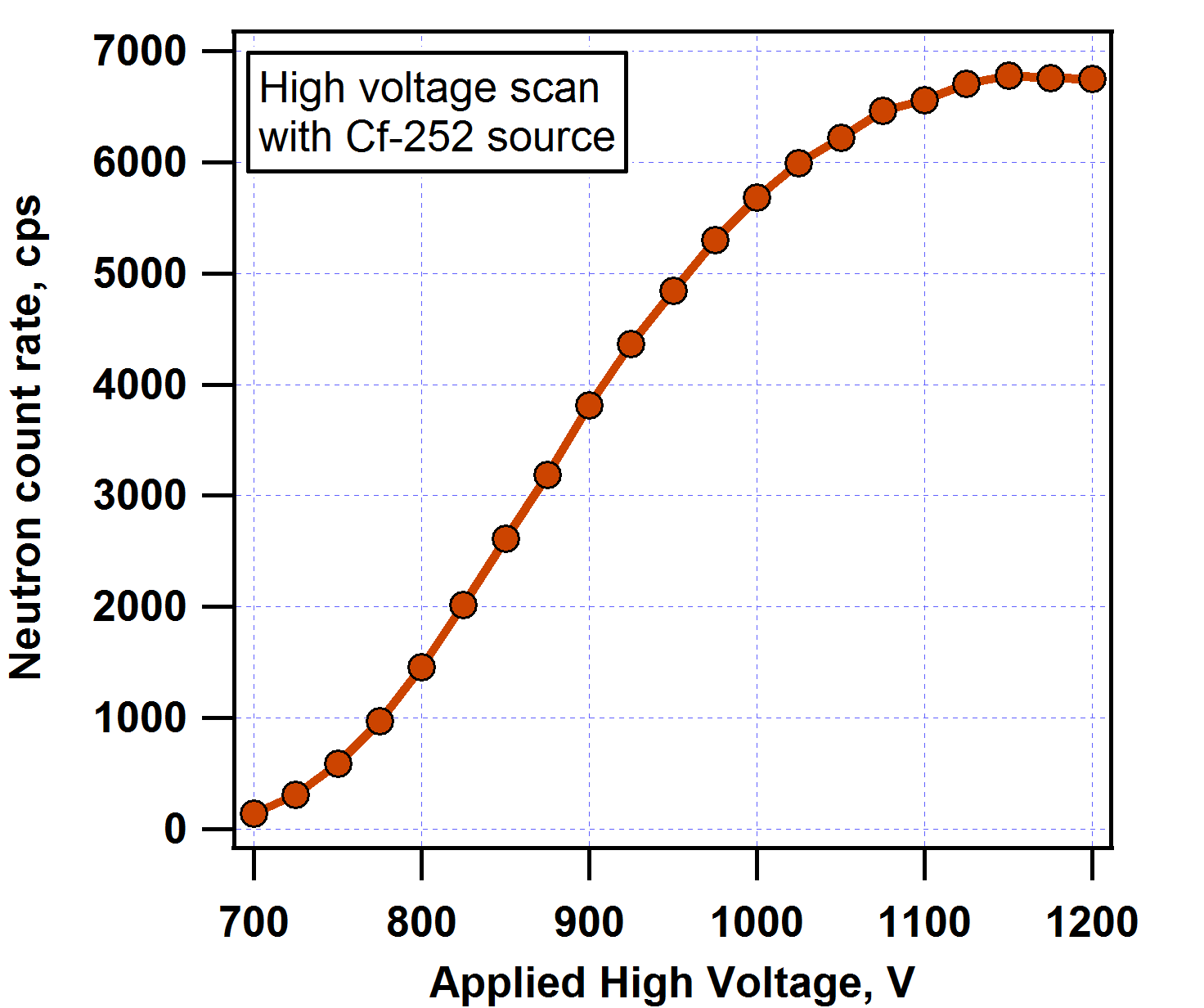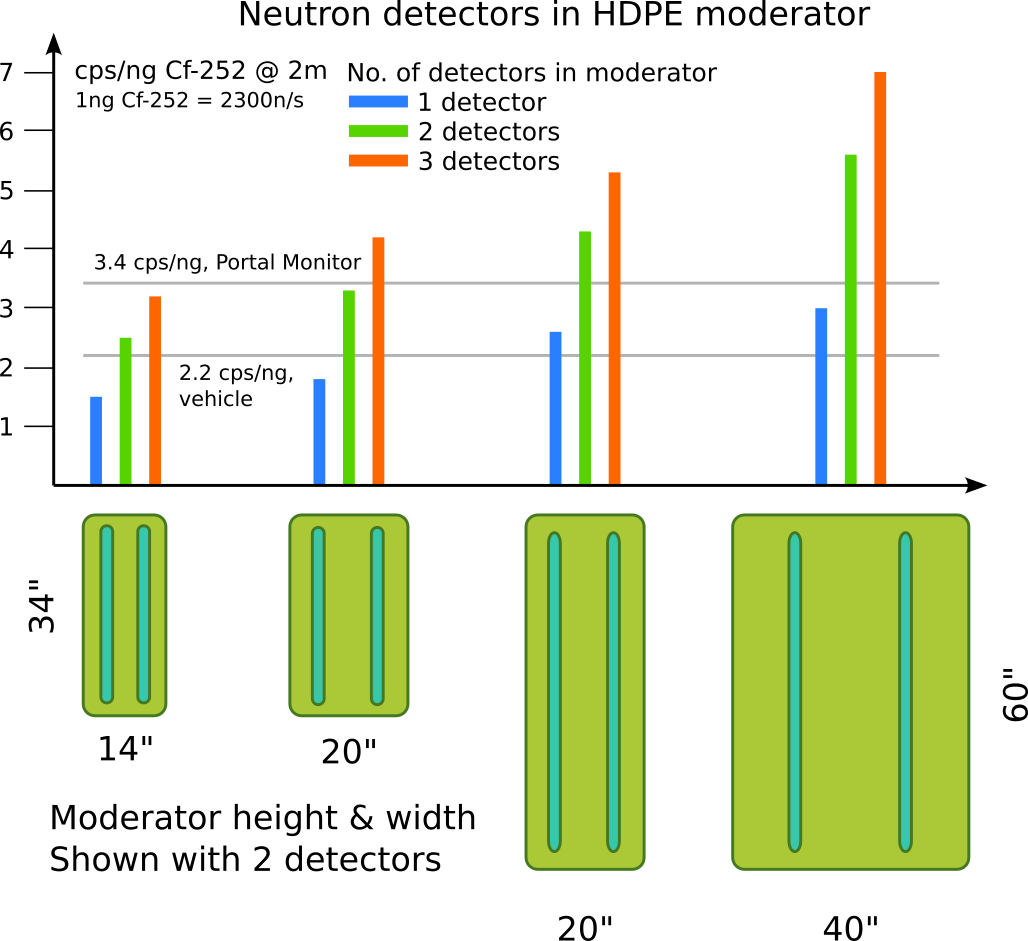Portal Monitor Operation
The PMT-N2K detectors have an embedded ARM M0+ 32-bit processor programmed in C, with a built-in portal monitor capability.
It can evaluate count rates 20 times per second and issue an alarm when the count rate exceeds the background rate.
The unit continuously monitors the count rate and updates the measured background count rate to keep up with slow changes in the environment due to rain, wind and dust. For a portable system the background may slowly change with the terrain without causing an alarm.
The PMT-N2K performs a statistical analysis every time slice (50ms or longer) and alarms if the alarm probability exceeds a programmed threshold of typically 1:10k to 1:1000k (1k=1000)
The panel on the right shows the behavior in a high neutron background of about 100n/s.
A second source then passes nearby, momentarily increasing the count rate.
The PMT-N2K responds immediately with an alarm.
A more detailed description can be found in the user's manual .
PMT-N2K Alarm
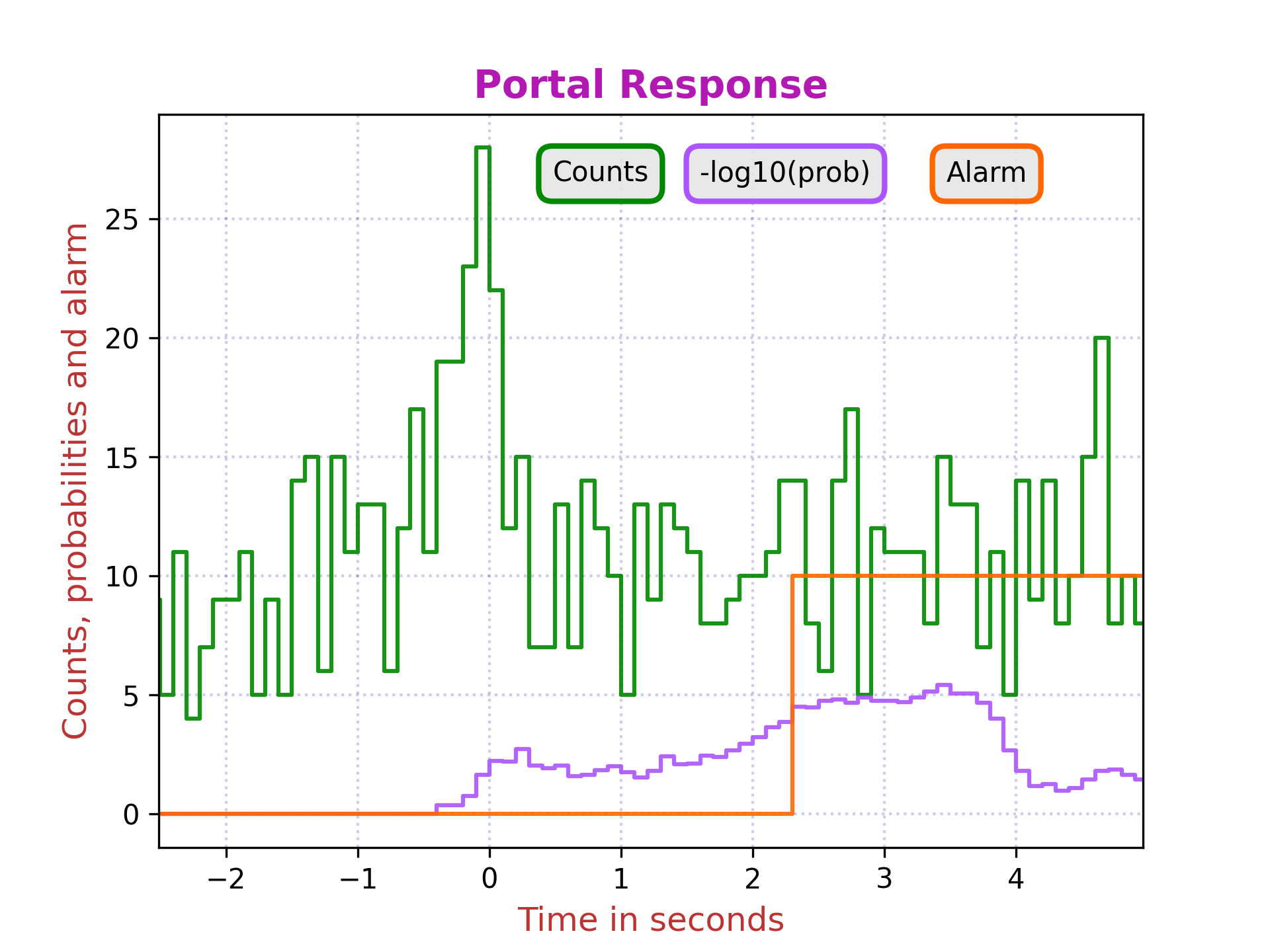
Plot of Number of events, probability and alarm per 100ms time slice.
To create the above plot, we used the logger capability of the PMT-N2K. The two logger channels were set to 129 (input to the portal monitor data analysis) and 130 (-log10(probability that this is due to background)).
The alarm threshold was set at 1:1000 = 1e-4. This means that the unit alarms if the probability that the counts recorded in the last L=40(=4s) time slices can be attributed to background is less than 1.0e-4. In mathematical terms: P(n>N | mu)<1e-4. N is the number of counts observed in the last L time slices while mu is the number of expected background counts during the same time period.
Sample − Background Operation
The PMT-N2K detectors have an embedded ARM M0+ 32-bit processor programmed in C, with a built-in Sample vs Background capability.
Here the purpose is to measure the neutron radioactivity of samples.
First the user sets "active_bank=1" and counts the background until they achieve the desired accuracy as reported by the device.
Next the user sets "active_bank=0" and places a sample near the detector.
The PMT-N2K performs a statistical analysis every 1s and alarms if the alarm probability exceeds a programmed threshold of typically 1:10k to 1:1000k (1k=1000)
The panel on the right shows the behavior in a high neutron background of about 100n/s.
A second source then was placed nearby, which permanently increased the total neutron count rate.
The PMT-N2K measures the sample count rate and performs a statistical analysis every second.
Over time it becomes more and more certain that the added source does indeed increase the neutron count rate above the previously established background.
A more detailed description can be found in the user's manual .
PMT-N2K Alarm
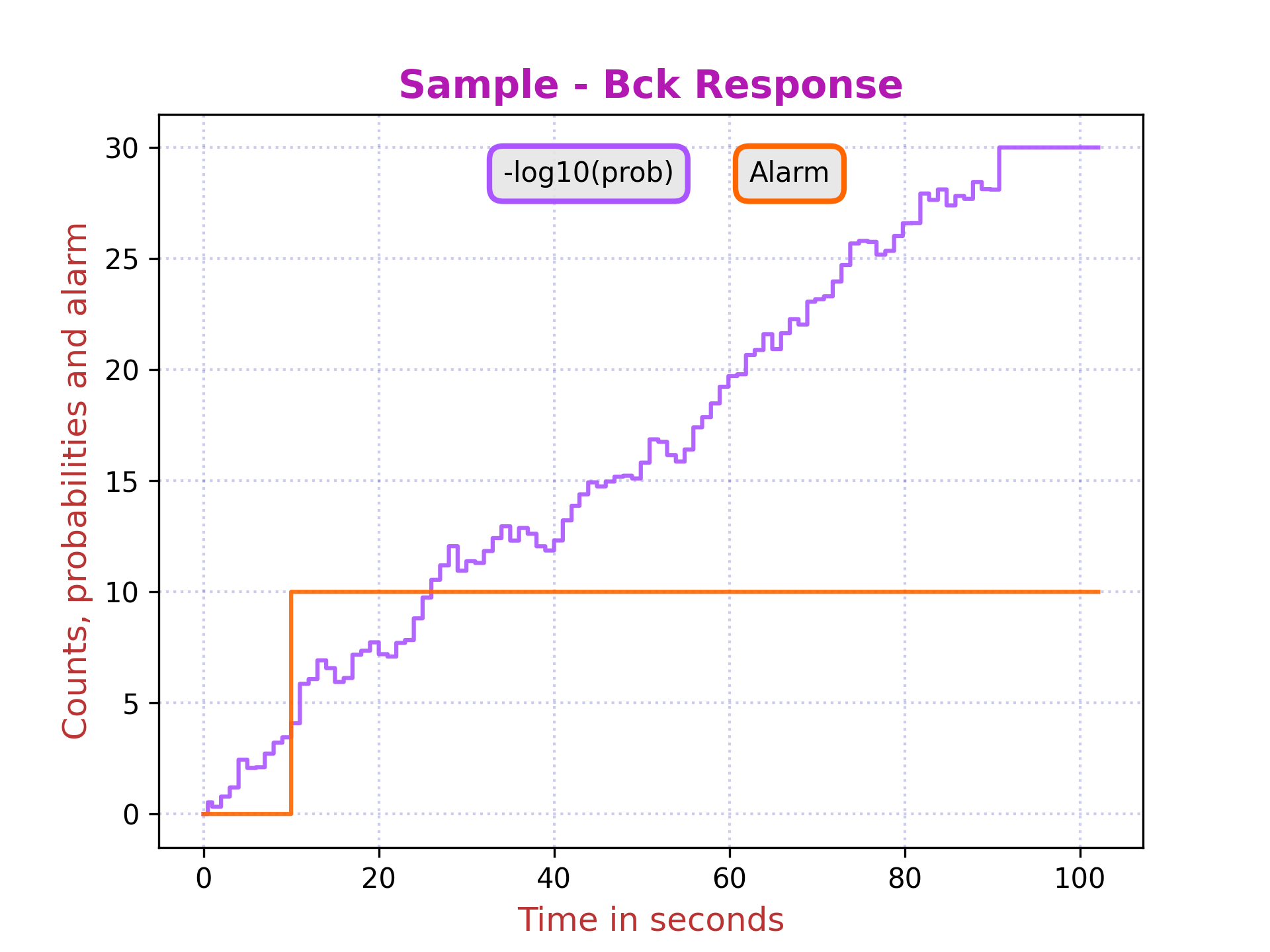
Plot of probability and alarm updated every 1s.
To create the above plot, we used the logger capability of the PMT-N2K. The first logger channel was set to 131 (-log10(probability that this is due to background)). Consider -log10(probability) to be a measure of certainty that the sample has excess radioactivity. If it is more radioactive than background, our certainty will continue to rise with increasing measurement time.
The alarm threshold was set at 1:1000 = 1e-4. This means that the unit alarms if the probability that the counts recorded so far can be attributed to background is less than 1.0e-4. In mathematical terms: P(n>N | mu)<1e-4. N is the number of counts observed until now while mu is the number of expected background counts during the same time period.
